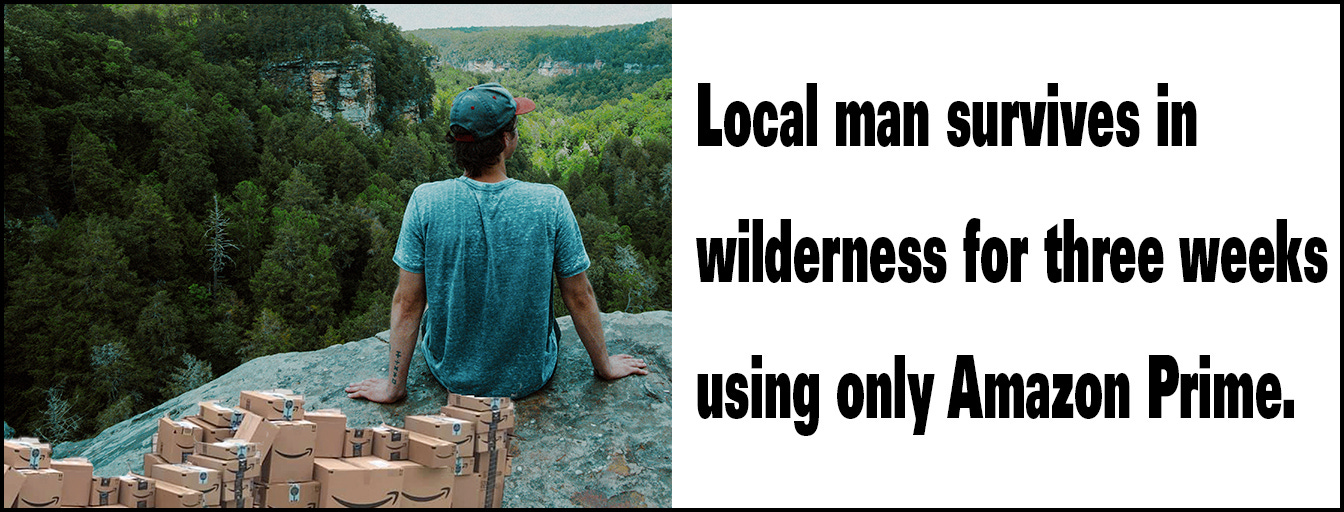MANATEE FOUND LIVING IN LOCAL POND 3000 MILES FROM HOME WATERS
Vancouver, British Columbia, Canada
Contents
Breaking News
Manatee
Flipper
Manatee - Audio
Entertainment
Dihydrogen oxide
Breaking News
Bird-watching group astonished to find a large aquatic mammal among the grebes.
File photo from Vancouver’s now-defunct “Mana-Sea World.” Stella, the Amazing Sea Cow, performs a trick with her trainer during a practice session.
By JENNY CONRAD
Senior Mammal Editor
Jeff Begley rubbed his eyes twice to make sure he wasn’t seeing things, but on the third look, he was sure the large animal, lazily swimming by him was a manatee.
“Luckily, I had my field guide to Manatees with me. I quickly identified that the animal was the West Indian variety, and it was a good thing too. Someone in the group swore it was a common dugong, and we almost came to blows.
Dugongs, of course, are strictly marine mammals and could not live in our freshwater pond.”
Manatees can live up to 70 years in the wild, and experts believe this animal is the famous, Stella the Amazing Sea Cow. She escaped from the now-defunct, Mana-Sea World. Elenor Robbins, a former employee of Manna-Sea World, had this to say.
“People forget Vancouver used to have a park for marine mammal, back in the nineteen sixties. Marine parks were popular all over the world back then. Most had some dolphins, orcas, and seals.
A group of private investors saw big bucks and wanted to get in on the trend. The problem was, here in the Pacific North West, you can see all those animals, right out your kitchen window. They wanted to import something rare, and exotic, so they came up with manatees.”
Robbins was one of the first trainers hired but had very little experience. Back in the late ‘50s and early ‘60s, almost no one had worked with marine mammals. Unless you had a job on the TV show Flipper, nobody would hire you.
Flipper
Bud and Sandy, the closest thing the 1960s had to a marine biologist.
But Robbins got a lucky break when she heard they were hiring manatee wranglers. On her application, she stated that she had seen manatees in Florida. That was enough for Sea World management. Robbins was now the most experienced of the new employees, but even she was leery of getting in the water with a thirteen-hundred-pound beast.
“We didn’t know what to expect. Manatees don’t have horns or armor. They don’t swim very fast. But they live in some of the most dangerous waters in the world.”
It’s true manatees live alongside sharks and alligators, but never seem to be bothered. Basically, they are a floating pork chop, that no one is eating. Why? One theory has it that manatees are actually venomous, but it’s still a theory.
It wasn’t until a pool boy fell in the aquarium, and startled a large male, that trainers discovered how they can survive in the wild. Robbins explains.
“The manatee evolved in the Amazon river basin and apparently along the way, they learned Brazilian jujitsu. We had no idea until Danny fell in the pool. Before we know what was happening, the manatee has him in a submission hold.
“It took months to gain their trust before you could get in the pool without getting choked out.”
But with gentle cajoling and many, many heads of lettuce, the staff was able to swim freely with the animals. Robbins remembers it was a tough gig to put an act together so quickly.
“For Stella’s feature act, we decided to imitate the other marine parks. One popular act was for a trainer to put each foot on the back of a dolphin and ride around the pool, like a Roman gladiator.
“With the manatees, the trainer would put a foot on each of their backs and snap the reins. Nothing would happen. They would just slowly float with the current like the trainer was standing on two giant potatoes.”
The Sea World operators were getting nervous. Without a feature act, they couldn’t open. They tried synchronized swimming. and balancing a ball on their nose. Even swimming alone manatees seem unsynchronized. The ball was no good, they would just try and eat it. In desperation, they even tried rolling one off a ten-meter diving platform. They were pretty good at swan dives but every time they did a cannonball, they had to refill the aquarium.
Among all the duds, one animal stood out. Her name was Stella, Stella the Amazing Sea Cow. She wowed her trainers with jumps, flips, and crowd-pleasing tail slaps that would soak the audience.
When opening day arrived, the tension was palpable, as Stella entered the pool. The orchestra played, and the crowd cheered. And the much-hyped Stella the Amazing Sea Cow did absolutely nothing. She sank to the bottom of the pool, and wouldn’t come up. Apparently, manatees have stage fright.
It wasn’t too long before the alcohol-soaked crowd became surly, and began booing. They threw beer cans and cigarette butts into the pool, before demanding a refund.
So, after two years of preparation, it was a one-night show.
All the manatees were shipped back to Florida. All except Stella, she was slated to be sold to a wealthy yurt maker in Mongolia.
Robbins, though, had her own plans for Stella.
“We were all she knew. I felt I had to help her escape. Mind you, this wasn’t a Free Willy situation, where she jumped over a seawall to freedom.
“My friends and I borrowed a front loader from a construction site. In the dead of the night, we scooped her out of the aquarium and dumped her in a local pond.
“I am glad to see she is doing well.”
And now the world can finally exhale, knowing that Stella the Amazing Sea Cow is doing just fine.
WWGN

















